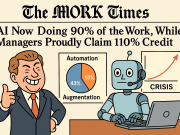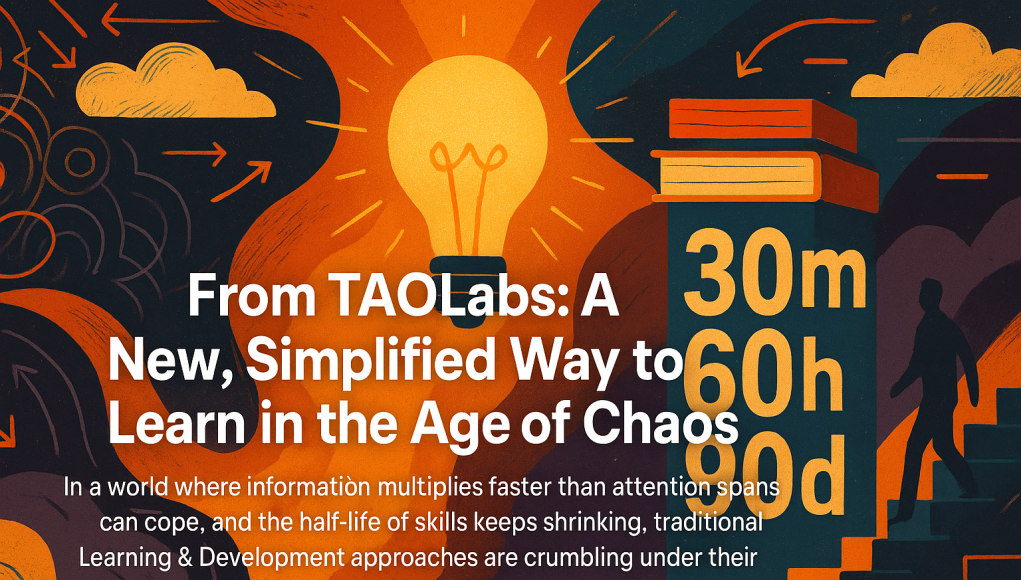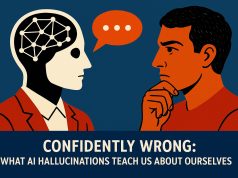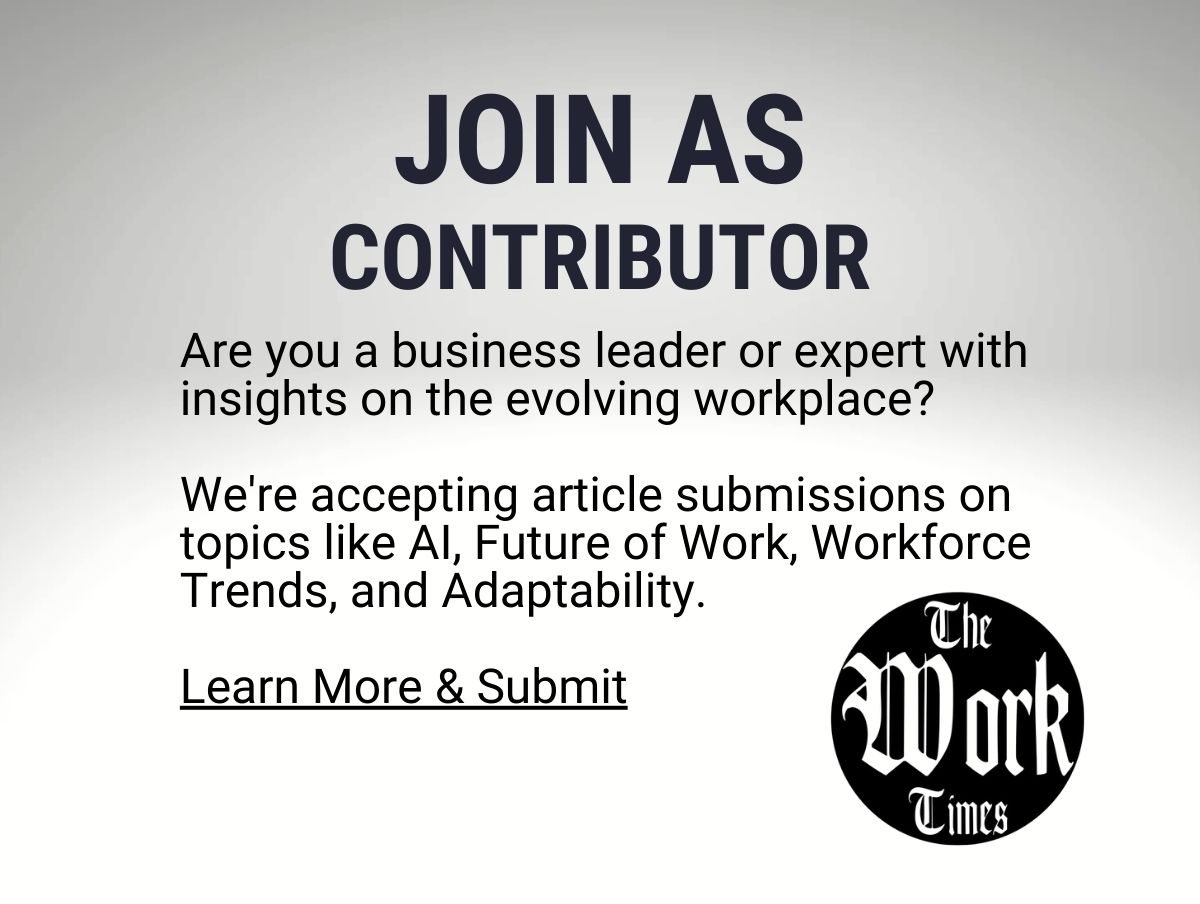In a world where information multiplies faster than attention spans can cope, and the half-life of skills keeps shrinking, traditional Learning & Development approaches are crumbling under their own complexity. Enter TAOLabs, the innovation hub of TAO.ai, where simplicity meets strategy.
Amidst the noise, we introduce a new, elegantly simple learning model designed for the age of chaos and accelerating change: 30m60h90d. It’s not about learning everything. It’s about learning the right things, consistently, and applying them with purpose.
In an era where shrinking learning cycles demand agile, applied upskilling, 30m60h90d offers a clear, human-centric path forward—turning learning from an overwhelming task into an achievable, measurable habit.
Part 1: Why the 30m60h90d Framework is Essential in Today’s Learning & Development Chaos
The Illusion of Progress: Learning in the Age of Noise
Modern Learning & Development (L&D) is facing a crisis—not of investment, but of effectiveness. Organizations are pouring billions into L&D platforms, yet employees remain disengaged, overwhelmed, and perennially “behind.”
The culprit? We’ve confused content availability with capability building.
Learning today resembles a crowded buffet. The options are endless, but most people are too overwhelmed to fill their plate intentionally. They sample a little bit of everything, finish nothing, and leave feeling unsatisfied.
In a world where AI is accelerating knowledge decay and reshaping job roles faster than HR can update job descriptions, this approach is not just inefficient—it’s dangerous.
The Root Cause: Complexity Disguised as Innovation
Corporate L&D strategies have become too complicated to succeed.
- Hyper-personalized AI learning paths.
- Multi-tiered LMS platforms.
- Engagement gamification dashboards.
All designed with good intentions, yet they often create learning fatigue rather than mastery.
The irony? In trying to solve the complexity of upskilling, we’ve introduced even more complexity.
As a result:
- Workers feel they’re always “behind.”
- Managers see minimal ROI.
- Learning becomes a checkbox activity.
Enter 30m60h90d: The Simplicity We Forgot to Value
The 30m60h90d framework is not a revolutionary invention. It’s the rediscovery of fundamental truths about how humans learn and grow.
- 30 Minutes/Day for Awareness: Regular, bite-sized learning to stay informed and relevant without overwhelming cognitive capacity.
- 60 Hours/Quarter for Application: Focused, deliberate practice where knowledge is converted into real, usable skills.
- 90-Day Sprints for Impact: Clear, time-bound goals ensuring learning translates into tangible business outcomes.
This model isn’t flashy. It’s not driven by buzzwords. But it aligns perfectly with how people actually develop skills — through consistent exposure, deep practice, and structured reflection.
Why This Framework is Perfect for Today’s L&D Chaos
1. It Respects Human Cognitive Limits
- Humans aren’t built to binge-learn.
- The 30-minute daily cadence aligns with cognitive load theory, ensuring new knowledge sticks without overload.
2. It Bridges the Knowing-Doing Gap
- Learning without application is entertainment.
- The 60-hour practice cycle transforms passive knowledge into active competence.
3. It Introduces Urgency & Accountability
- Open-ended learning leads to procrastination.
- The 90-day sprints create psychological momentum, ensuring progress is visible and celebrated.
4. It Scales Across Roles & Organizations
- Whether you’re an entry-level analyst or a C-suite leader, the framework adapts.
- It’s role-agnostic but impact-specific, making it universally applicable yet outcome-driven.
Why Now? The Timing is Critical
We’re at an inflection point:
- AI is automating tasks faster than humans can reskill.
- Attention spans are shrinking amidst content overload.
- Organizations are under pressure to show real L&D ROI.
In this environment, the need for a simple, structured, and psychologically sound learning model is not a luxury. It’s a necessity.
The 30m60h90d framework doesn’t promise magic. It promises method. And method, consistently applied, delivers mastery.
Much like nature builds ecosystems through countless small, iterative interactions, this model builds human capability the same way: small daily inputs, focused seasonal efforts, and cumulative impact over time.
In Conclusion: The Quiet Revolution of Common Sense
In an age where innovation often means adding complexity, perhaps the real innovation lies in returning to what works.
The 30m60h90d framework isn’t a silver bullet. It’s a compass. One that points towards a sustainable, effective way to navigate the chaos of modern L&D.
For workers striving to stay relevant. For leaders seeking tangible upskilling impact. For communities needing shared growth.
This is not optional anymore. It’s essential.
Part 2: The Science Behind 30m60h90d — Why It Works (When Most L&D Programs Don’t)
The False Promise of Modern Learning: More is Not Better
Before we dive into why 30m60h90d works, let’s revisit a painful corporate truth:
Most L&D programs fail not because of lack of resources, but because they ignore how humans actually learn.
Organizations are seduced by scale — more content, more platforms, more features. But this “more is better” approach clashes head-on with human psychology.
Result? Learning becomes performative, retention plummets, and application lags behind.
That’s where 30m60h90d flips the script — by aligning with how the human brain is wired to learn and grow.
Why 30m60h90d Works: The Scientific Foundations
Let’s unpack the three pillars — 30m, 60h, and 90d — through the lens of cognitive science, behavioral psychology, and organizational learning theory.
1. 30 Minutes/Day: The Cognitive Load Sweet Spot
🧠 Cognitive Load Theory (Sweller, 1988)
- Humans can process only a limited amount of information at once.
- Overloading working memory leads to rapid forgetting and disengagement.
📈 How 30m Helps:
- A 30-minute daily learning ritual stays within the optimal cognitive load threshold.
- Small, focused learning chunks (microlearning) ensure information is absorbed, not dumped.
- Repetition through daily practice strengthens long-term memory consolidation (Ebbinghaus Forgetting Curve).
🐜 Worker1 Analogy:
Think of it like ants building a colony — tiny, daily efforts compound into monumental structures. 30m is not about speed; it’s about sustainable growth.
2. 60 Hours/Quarter: From Passive Learning to Deliberate Practice
🎯 Deliberate Practice (Ericsson & Pool, 1993)
- Mastery is achieved through focused, goal-oriented practice with feedback loops.
- Passive consumption (videos, lectures) barely moves the needle.
🛠️ How 60h Helps:
- Allocating 60 hours over a quarter (~5 hours/week) forces deep engagement.
- Projects, simulations, and real-world tasks transform abstract knowledge into tangible skills.
- Feedback and reflection cycles accelerate learning curves.
🔄 Kolb’s Experiential Learning Cycle
- Concrete Experience → Reflective Observation → Abstract Conceptualization → Active Experimentation.
- The 60h phase naturally cycles through these stages, embedding true learning.
🐝 Worker1 Analogy:
Just as bees don’t learn to pollinate by reading manuals, workers develop expertise by doing. 60h ensures the doing happens.
3. 90-Day Sprints: The Psychology of Goal-Setting & Momentum
🏁 Goal-Setting Theory (Locke & Latham, 1990)
- Specific, challenging goals significantly boost performance.
- Deadlines create urgency and focus attention.
💡 How 90d Helps:
- 90-day sprints provide a psychologically manageable timeframe.
- Clear goals (learn X, apply Y, deliver Z) convert learning into business impact.
- Regular reviews and milestones maintain motivation through visible progress.
🔄 Bandura’s Self-Efficacy Theory
- Achievable goals within 90-day sprints build confidence (self-efficacy), fueling further growth.
🌳 Worker1 Analogy:
Think of it like planting a seasonal crop. The 90-day cycle ensures learning is purposeful, measured, and harvested — not left to grow wild and aimless.
Why Most L&D Fails These Tests
Let’s be blunt:
- One-off workshops overload cognition but lack reinforcement.
- Content-heavy LMS platforms encourage passive learning without application.
- “Always-on” learning portals promise flexibility but deliver decision fatigue.
- No clear impact metrics lead to learning without visible business value.
In contrast, 30m60h90d aligns with: ✅ Human attention span ✅ Memory retention science ✅ Application-driven learning ✅ Psychological motivation ✅ Business-aligned outcomes
The TAO.ai / Worker1 Edge
At TAO.ai, we see 30m60h90d not as a learning plan, but as a human development rhythm — one that synchronizes individual growth with team impact and community upliftment.
It’s scalable, adaptable, and—most importantly—grounded in how people actually learn and thrive.
In Summary: Science Favors the Simple
In a world where AI promises to “personalize” learning through ever more complex algorithms, the 30m60h90d framework offers a contrarian (and science-backed) truth:
Learning happens through consistent exposure, focused practice, and meaningful reflection. Not through information overload or gamified distractions.
It’s not a shortcut. It’s a structured, evidence-based pathway to real, applied learning.
Part 3: The Business Case for 30m60h90d — Learning That Actually Pays Off
The Corporate L&D Dilemma: Big Budgets, Small Returns
Let’s face it: L&D has a measurement problem.
Despite staggering investments — global L&D spend exceeds $370 billion annually — the tangible business impact often feels… underwhelming.
- Skill gaps persist.
- Employee engagement remains low.
- ROI conversations stay vague.
Why? Because most L&D strategies focus on inputs (content, courses, time spent), not outputs (skill application, business outcomes).
Enter 30m60h90d — a framework designed not just for learning, but for converting learning into measurable value.
How 30m60h90d Delivers Tangible Business ROI
1. Improved Workforce Agility (30 Minutes/Day)
The Challenge: In a volatile business environment, agility is survival.
The 30m Solution: Daily micro-learning keeps employees informed about emerging trends, technologies, and best practices — without overwhelming them.
Business Impact:
- Faster adaptation to market changes.
- Reduced ramp-up time for new tools/processes.
- More proactive, informed decision-making.
2. Enhanced Skill Proficiency & Problem-Solving (60 Hours/Quarter)
The Challenge: Knowledge without application is corporate theater.
The 60h Solution: Structured project-based learning ensures employees apply new skills to solve real business problems — not hypothetical case studies.
Business Impact:
- Increased operational efficiency through upskilled teams.
- Higher innovation rates from hands-on experimentation.
- Tangible contributions to KPIs (cost savings, process improvements).
3. Clear Goal Alignment & Performance Uplift (90-Day Sprints)
The Challenge: L&D often fails to connect individual learning to organizational goals.
The 90d Solution: Time-bound learning sprints with defined objectives (e.g., “automate X process,” “improve Y metric”) ensure direct alignment with business priorities.
Business Impact:
- Visible progress towards strategic goals.
- Enhanced employee accountability and ownership.
- Data-driven tracking of learning impact on performance metrics.
Secondary Benefits That Drive Organizational Value
✅ Increased Employee Engagement & Retention
- Structured learning pathways (30m60h90d) foster a sense of growth and purpose.
- Employees who see their skills grow are less likely to disengage or leave.
- Reduced turnover translates into significant cost savings.
✅ Culture of Continuous Improvement
- 30m60h90d normalizes learning as a daily habit, embedding a growth mindset culture.
- Teams evolve from passive learners to active contributors and innovators.
✅ Scalability & Cost Efficiency
- No need for expensive, over-engineered learning systems.
- The framework scales across functions, geographies, and seniority levels with minimal overhead.
- High return on existing L&D investments by ensuring knowledge is applied and measured.
The Business Bottom Line: Learning as a Competitive Advantage
Companies that embrace 30m60h90d are not just training their workforce. They’re building:
- Adaptive organizations.
- High-performing teams.
- Resilient ecosystems of continuous innovation.
In a world where AI automates tasks but human skills drive differentiation, the ability to learn, apply, and impact swiftly becomes the ultimate competitive edge.
30m60h90d: From Learning Activity to Business Strategy
This isn’t a “nice-to-have” anymore. It’s an operational necessity.
For every CEO, CHRO, and L&D leader asking:
- “How do we upskill at scale?”
- “How do we measure real impact?”
- “How do we make learning stick?”
30m60h90d is the answer that fits within your workflows, respects human limits, and delivers business results.
Final Thought: From Learning Fatigue to Learning ROI
The future belongs to organizations that master the art of continuous, applied, and impactful learning.
30m60h90d offers a simple, science-backed, and business-aligned framework to get there.
Not theoretical ROI. Real, measurable, operational ROI.
The Problem We Face: Learning in a World of Chaos
We are living in an unprecedented era of information abundance and skill scarcity. AI evolves faster than job descriptions. Attention spans shrink. L&D investments skyrocket, yet real impact remains elusive.
Most learning strategies fail because they:
- Overwhelm with complexity.
- Over-rely on passive content consumption.
- Underestimate the importance of application and measurable outcomes.
In short, we’ve been trying to fix a human problem with tech-heavy solutions that ignore human psychology.
The 30m60h90d Solution: Simplicity That Aligns With How We Actually Learn
Through this series, we’ve explored the core of the 30m60h90d framework:
- 30 Minutes a Day for consistent, manageable learning.
- 60 Hours a Quarter for deep, applied practice.
- 90-Day Sprints for structured progress and business alignment.
It’s simple. It’s human. And critically, it works because it respects:
- Cognitive load limitations.
- Behavioral habit formation.
- The science of deliberate practice.
- The business need for tangible ROI.
The Business Imperative: From Learning Fatigue to Learning Impact
Beyond learning for learning’s sake, 30m60h90d addresses what matters to organizations:
- Faster upskilling cycles.
- Direct impact on performance metrics.
- Increased employee engagement and retention.
- A scalable, cost-effective L&D model.
It turns learning from a checkbox activity into a strategic business lever.
The Worker1 Perspective: Learning as a Collective Growth Engine
For individuals, 30m60h90d offers clarity in chaos. For teams, it fosters collaboration and shared learning. For communities, it scales knowledge and creates resilient ecosystems.
It embodies the Worker1 philosophy: Strong individuals uplift their communities, and strong communities cultivate exceptional individuals.
The Final Word: A Compass for the Future of Learning
As organizations grapple with the dual challenge of technological acceleration and human adaptability, the need for a clear, actionable, and scientifically sound learning framework has never been greater.
30m60h90d is not a trend. It’s a return to first principles. It’s how we align human learning rhythms with business imperatives. It’s how we turn chaotic L&D into measurable growth.
In the end, the organizations that win will be those that simplify learning—not complicate it—and empower their people to learn, apply, and impact continuously.
30m60h90d is your blueprint to do exactly that.




























